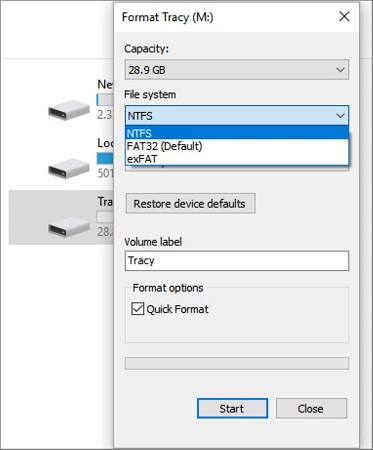

How to format USB drives in Windows 10 Format USB drive from File Explorer The default AUS recommended by Microsoft is 4096 bytes for standard users. Therefore, it is important that you select the correct AUS. Fragmentation causes the storage space to perform relatively slow as the data is now scattered all across the storage space, hence consuming time to get and compile it. These blocks can be together or can be further apart, known as fragmentation. In contrast, if you save a 3KB file in storage space with an AUS of 2KB, then it will need to be stored in separate blocks. Nevertheless, the remaining 1KB will be wasted. If you have a 3KB file stored in a storage space having 4KB AUS, the 3KB file will be stored in a single block. This can be understood better with the aid of an example. However, it does affect how much storage space can potentially be wasted. However, the overall space of the storage will be the same, regardless of the AUS. While formatting a storage drive, apart from the file system type, you are also expected to define an AUS.ĪUS is the size of each block within a storage space. Allocation Unit Size (AUS)īefore we dig into the process of formatting USB drives, there is one more thing we ought to cover: the Allocation Unit Size (AUS). Go here to learn more about the differences between NTFS, exFAT, and FAT32 file systems. When trying to format a USB drive on a Windows 10 device, you have to choose from the file system you want to format it in. Windows currently supports 3 types of formatting:Įach of these file systems have their own attributes, advantages, and disadvantages. Therefore, a USB drive, being a storage device, requires a file formatting system before it can be used. It is also a mechanism of how the storage device reads and writes the data. This is because the file system defines the attributes, characteristics, and rules which the device will have after it has been formatted. Format USB without drive letter using Command PromptĮvery storage device needs a file formatting system.Format USB using drive letter using Command Prompt.


 0 kommentar(er)
0 kommentar(er)
